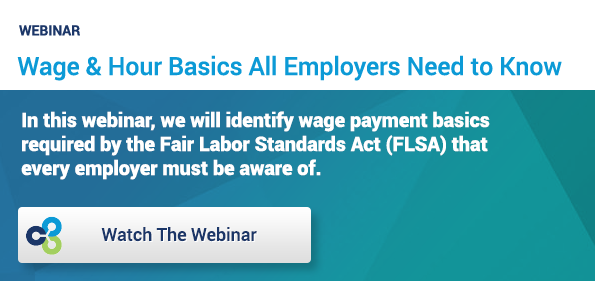 Ok, your plumbing business continues to grow and you need to hire more staff. Can it be as simple as… just hire someone and then… just pay them? Actually, it can be pretty simple; following these basic guidelines will help you keep it organized.
Ok, your plumbing business continues to grow and you need to hire more staff. Can it be as simple as… just hire someone and then… just pay them? Actually, it can be pretty simple; following these basic guidelines will help you keep it organized.
Just hire…
Everyone you hire should complete three documents:
- Employment Application: Ask your HR advisor or search the Internet (sites like google.com have free templates you can download). Be sure you have the date, applicant’s name, address, phone, email, previous employment history and education history. It’s also a good idea to include position, salary and hours requirements so you don’t call applicants about positions that don’t meet their needs.
- Form W-4: This is the tax withholding information you’ll need to pay employees. Applicants should record their social security number and withholding preferences on the form. The latest version is always at irs.gov/pub/irs-pdf/fw4.pdf. Some states have additional forms that are required; it’s best to check your state’s website in the business tax section.
- Form I-9: This is The Department of Homeland Security’s employment eligibility form. Employees must complete their section by their first day and provide at least two documents. The form has the details, but typically a U.S. Passport, a driver’s license with a photo, a social security card or a birth certificate will cover most new hires. You’ll need to have two of these documents to complete the Employer section by their third day. The form is available at uscis.gov/sites/default/files/files/form/i-9.pdf
- Now there’s a bit more… State and Federal law require all employers to report new hires to a state directory within 20 days of hiring someone. You’ll need to report the employee’s name, address, social security number and date of hire. Your company’s federal tax ID (FEIN) and business name will also be required. Most states have a website where you can upload or enter the information.
- There’s also the “Federal Record Keeping Requirements.” There are several types of documents you must keep; scan them if you can, but if not, save the hard copies.
- Resumes and Applications: For applicants you didn’t hire, keep these for one year.
- Employee Documents: Keep your employee documents for three years after date of hire or one year after termination, whichever is later. Put your I-9s in a separate folder!
- Payroll and Tax Records: Keep these for four years.
Can I Pay Somebody Yet?
Well, a few more things to set up:
- Federal Tax ID: If you don’t already have one, get an Employer Identification Number (EIN or FEIN) from the IRS. Go to irs.gov and follow the links for applying for an EIN.
- State and Local Tax IDs: Depending on where you conduct business, you may need to register for state withholding or local employment taxes. The Small Business Administration (SBA) has a nice summary website for this: https://www.uscis.gov/i-9
- State Unemployment Tax: All states require State Unemployment registration and some add disability insurance or other related taxes. Going to your state’s website and finding the tax section is the best bet.
- Be Ready to Pay: Federal income taxes are due based on what kind of “filer” you are. Many businesses will be monthly filers and taxes typically will have to be paid to the IRS by the 15th of the month after your payroll. Make sure you know when your taxes are due, not only for the IRS but for your state and local taxes. You do not want to pay late! A great website link for federal tax due dates is at irs.gov/Businesses/Small-Businesses-&-Self-Employed/Employment-Tax-Due-Dates. State websites will also have calendars, due dates, forms and links for electronic sign up on their sites as well.
- Workers’ Compensation Insurance: Most states will require workers’ compensation coverage for your employees. To keep track of your expenses here, you will need to have a state code and a workers’ compensation code and track your employees’ payroll hours and amounts by these codes.
Just pay them…
I think you’re finally ready to pay! If you don’t have one, you’ll need some sort of HR advisor, service provider or system…but that’s for another day and another article!
Just Hire and Pay Summary
- Employment Application, W-4, I-9
- Report New Hires to the State
- Set Up A Filing System
- Get Your Tax IDs
- Get Workers’ Compensation Insurance
- Be Ready to Pay and File
- Get a Service Provider or System





